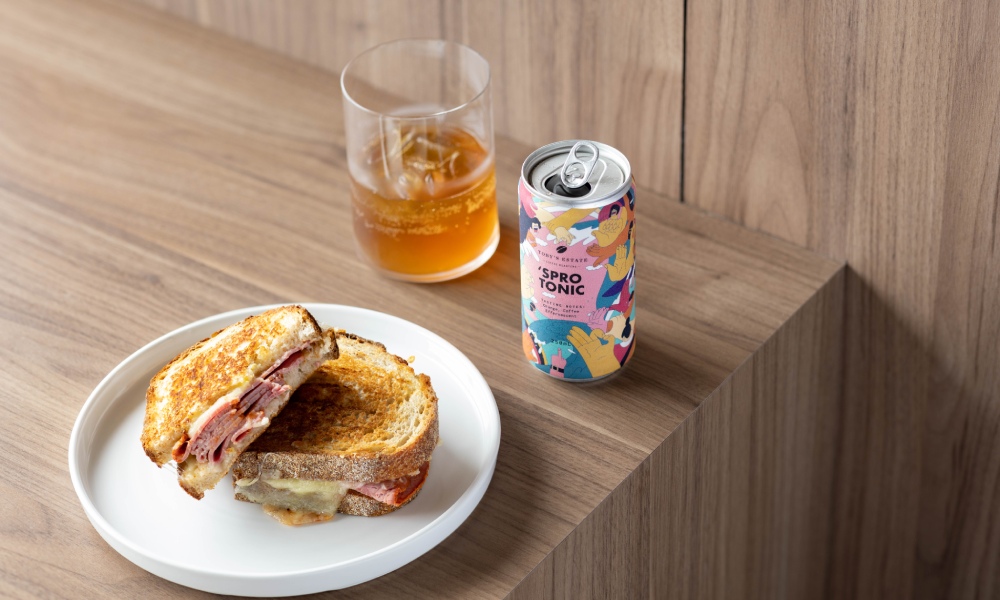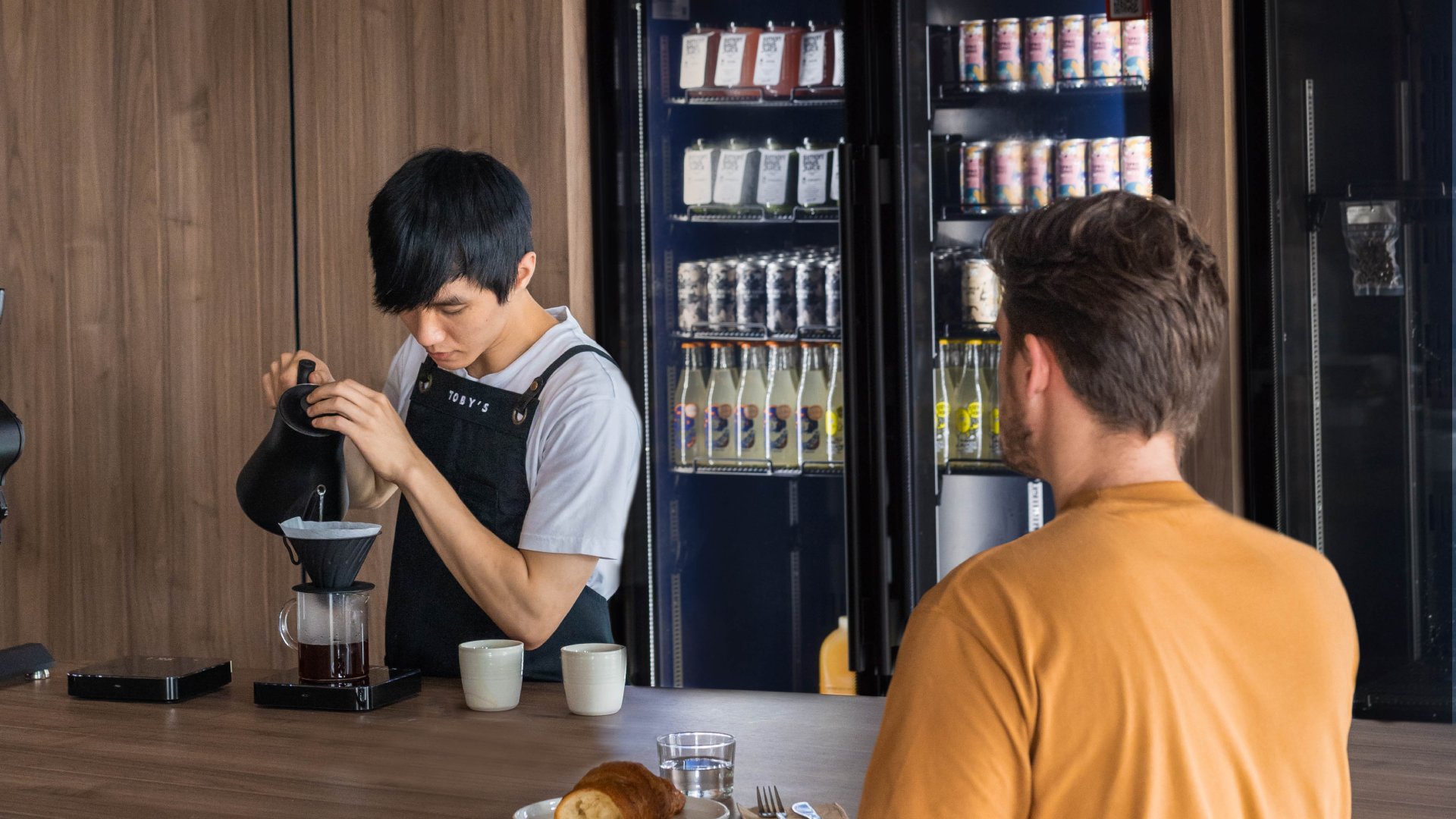The Great Pivot: The rise of coffee-lifestyle brands
Toby Estate’s green coffee buyer, Charlotte Malaval, explains how coffee brands can evolve and build brand identities.
These days, making good coffee isn’t enough to help businesses stand out from the crowd. Despite the economic effects of the pandemic, coffee shops seem to be popping up throughout consuming countries, and customers are pampered with more options than ever before.
Coffee shops come in all shapes and sizes, from small espresso bars and takeaway kiosks to full-blown breakfast and brunch cafés – each one serving a specific need for customers throughout the day.
To survive in this saturated market, coffee shops have been forced to diversify. Subsequently, many are growing into businesses that cater to people’s lifestyles, not just their need for caffeine. Now, more than ever, the end goal is to give customers a positive experience.
However, the line between coffee shop and lifestyle brand is still quite undefined. Charlotte Malaval, one of the finalists at the 2016 World Barista Championship and green buyer for Toby’s Estate Coffee Roasters, says that it’s all about diversification.
“A coffee lifestyle brand is a coffee business whose primary focus is on coffee as well as alternative products that are valued just as much as the coffee items,” she explains. “These companies value consumer culture and the desire for trendy merchandise that is supported by the coffee industry, opposed to a focus on its coffee programme.”
In other words, lifestyle brands seek to build relationships between customers and brand identity, including the lifestyle it reflects. Regular customers become loyal customers, not just because the coffee is good, but because the brand cultivates a culture that the customer wants to be a part of.
A lot of this is derived from the values that a brand identifies with, but it’s also about branching out. For instance, Onyx Coffee Lab opened its fourth location in Bentonville, Arkansas, translating transparency-driven coffee literally into its interior design.
Kofra Coffee Roasters & Brewers, based in the UK, has a curated shop selling local specialty produce, from wine to dry-aged beef. Toby’s Estate Coffee Roasters, based in Australia, sells coffee subscriptions and supplies commercial coffee equipment.
Charlotte adds that approachability is key for coffee shops trying to evolve into brands with their own unique identities.
“The coffee programme needs to be presented in an approachable way that is not too far detached from what mainstream is used to,” she says. “It’s great to push boundaries but we also need to respect that not everyone is interested in coffee like a die-hard coffee enthusiast may be.”

How can coffee shops specialise and evolve?
Before putting a significant capital into renovation or hiring a specialised consultant to relook a café’s menu, it’s wise to start small and learn from existing resources. One very useful source of information is customer responses.
Sometimes, it’s not the product itself, but the market or an operational backend that might make an idea commercially inviable. Other times, the idea just needs a little tweak to be able to succeed.
In Charlotte’s case, Toby’s Estate adjusted several of its product launches to be in line with customer preferences.
“Another huge learning for us was the launch of a blend that was created to support communities at origin,” Charlotte says. “However, it was very difficult to manage such a small volume as it was a new product on top of our pre-existing line-up.”
This isn’t just a way of testing the market, but also a test of the business’ infrastructure and whether or not there’s a need for drastic upgrades. Sometimes, evolution does come at a cost. Ultimately, this coffee blend was discontinued, because it didn’t align with the brand’s values and existing setup.
“We also realised that it didn’t make much sense to only have one blend dedicated to supporting our producers,” Charlotte explains. “We decided to remove it and actually include our community projects as part of our current offering.”
For her, the bottom line when expanding your product range is to look at the numbers from every aspect.
“From those issues, we have been able to improve costs and look at assembly lines and outsourced labour to achieve the same cool products that are both amazing for consumers and that are sustainable to produce for the business,” she adds.
Once your company has decided how to diversify its product range, you need to communicate this to the market. However, this is a more nuanced task, as your existing, loyal customers may not immediately feel connected to the direction you’re taking.
Charlotte emphasises that being a specialist in execution is still absolutely essential. A coffee brand can’t evolve if it compromises on quality and service, whether that’s mastering espresso brewing or managing complex supply chain logistics.
Was the Covid-19 pandemic a wake-up call for coffee brands?
Financially, the pandemic was a challenging period. However, it also presented an opportunity for businesses to reassess operations, refocus on their strengths, and build their portfolios around those strengths.
Moreover, the economic impacts of the pandemic are lingering, forcing businesses to adapt to survive. For example, Charlotte expects coffee prices to remain high for the next three years, especially for commercial coffee.
“In summary, we have 30-40% less coffee, 40% more expensive fertilisers, 60% more expensive oil and some increase in wages too,” she expands.
This poses an interesting challenge for both specialty coffee businesses and those that purchase and sell commercial coffee.
“The interesting part to me is that prices are super high, especially for commercial and low quality roasters,” Charlotte says. “They’d have to increase prices, and now their coffee is actually much closer in price to entry level specialty coffee.”
In some ways, this is a very good thing for specialty coffee businesses, as specialty prices may seem less daunting the closer commercial coffee gets to them.
“It would allow some people to actually start buying better coffee for the first time, or customers to swap to specialty roasters, as this price increase has reflected more on commercial coffees than specialty coffees,” Charlotte agrees.
Whether a coffee brand decides to limit or expand their offerings, Charlotte asserts that the most important factor is the wealth of resources available to modern coffee businesses.
“As an industry we have never had more access to research, knowledge, and innovation,” she concludes. “We need to capitalise on what we have available.”







